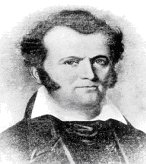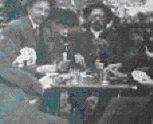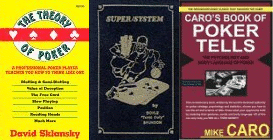Origins
The earliest versions of poker seem to have derived from the 16th century Persian game As Nas, or else from the French version, known as As Naz. Which game developed first isn’t clear, but both can be translated as “My beloved ace!”—and what player hasn’t felt that?
This game was played with 25 cards with 5 different suits. The game played in a similar fashion to modern 5 card stud and possessed similar poker hands rankings, such as three-of-a-kind.
We know that As Naz metamorphosed into a three-card bluffing game called poque (from the Gaelic for “kiss”) as well as a close German cousin called Pochspiel (“the bragging game”). French soldiers brought poque to New Orleans around 1820, when it was played with a 20-card deck.
After a shuffle, five-card hands were dealt face-down to four players, who proceeded to bet on the relative strength of their cards. Without straights or flushes—let alone straight flushes—four aces, or four kings with an ace, were the only unbeatable hands.
But even if you held no pair at all, the look in your eye combined with the size of your wager could force players holding much stronger hands to relinquish the pot, a tactic that seemed very much in the spirit of our fledgling market democracy.
English actor Joseph Crowell described the game as played in New Orleans in 1829: played with a deck of 20 cards, four players bet on which player’s hand of cards was the most valuable.
One night in 1832, four men played poker aboard a Mississippi steamboat. Three of the men were professionals and the other was a helpless sucker from Natchez. The game was rigged so that the young man from Natchez would lose all of his money and he in fact did.
Distraught, the young man attempted to escape his miseries by jumping into the river. An observer prevented this suicide attempt and led the young man back to a cabin. The mysterious observer then returned to the game with the three sharks. In the midst of a high stakes pot, the observer caught one of the professional’s cheating. He wrestled the cheat and pulled a knife on him.
The observer yelled, ‘Show your hand! If it contains more than five cards I shall kill you!’ As he twisted the cheater’s wrist, six cards fell to the table. The observer then took the $70,000 pot,. He returned $50,000 of it to the man of Natchez and kept $20,000 for his trouble.
‘Who the devil are you, anyway?’ cried the cheat.
 ‘I am James Bowie.’ 1
‘I am James Bowie.’ 1
In less than two centuries time, poker has changed drastically. Once a game mainly played by cheats, outlaws, and knife-makers aboard riverboats, it has developed into a celebrated ‘sport’ played worldwide. The cheat and hustler have been replaced by the professional poker player, whose celebrity status is much more akin to a professional athlete or movie star than an infamous outlaw. Poker hands are no longer dealt by professional cheats who manipulate the deck; instead, they are often dealt by software programs connecting players from around the globe.
Those responsible for poker’s initial boom were professional gamblers, trying to expand their craft. The professional gambler viewed his occupation as quintessentially American. They considered themselves entrepreneurial businessmen who took advantage of America’s growing obsession of gambling. However, the public did not have such a rosy view of professional gamblers.
Gambling was viewed to be comprised of two distinct groups. There was the player, who was considered to be a gentleman who merely enjoyed this form of entertainment in moderation. In contrast, there was the professional, who aimed to simply make money without any regard to moderation or propriety. Professional gamblers were considered to contribute nothing to society. The public viewed their practice as nothing more than one man trying to con another out of his hard-earned money.2 This was especially the case because professional gamblers often cheated in order to win money from their victims.
Another practice of professional gamblers that was particularly troublesome was their disregard for the social status of their victim. "To [professional gamblers], as to prostitutes, it seemed unprofessional to differentiate between paying customers. They consequently played indiscriminately with all potential victims, from the most upright planet to the meanest flatboats man or, even worse, the black slave 3 ." This practice slowly led to the "democratization" of gambling in America. No long was gambling, poker in particular, thought to be a practice of only the wealthy. Rather, it became a practice to which people of all social ranks were accustomed.
Professional gamblers were involved in banking and percentage games, such as roulette and faro, as well as card games. Of all games, faro was a particular favourite for both professional and casual gamblers. Faro is a game where players would bet on which cards would be dealt next. Both banking games, like faro, and card games guaranteed the pro a steady income over the long run. Banking and percentage games had a built-in house edge that guaranteed the professional to be a statistical winner. These types of gamblers are similar to the modern casino, which primarily rely on these types of games for revenue. When professionals dealt card games, such as three card Monte or poker, they guaranteed themselves a steady income from cheating. 4
Poker initially was played with one round of betting. Players were dealt five cards face down and there was no draw of cards. 5 Professional gamblers later modified the rules in order to enhance the profitability of the game for them. After 1850, wild cards and bluffing became common practices in the game. The draw was also added. The addition of the draw helped professionals because it introduced another round of betting (meaning another opportunity to cheat their opponents) as well as introducing more skill to the game. 6
Poker playing became increasingly popular as American gambling shifted from the frontier towns to the riverboats. While gambling was tolerated on the South-western frontier during the early 1800’s, it came out of favour by the 1830’s. The Western, frontier culture of these towns was steadily replaced by Southern culture, which was more averse to gambling. 7 Western towns passed ordinances against gambling and many towns kicked out known gamblers. Some gamblers were tarred and feathered and there were even instances where vigilante groups lynched gamblers. 8 Since their trade was no longer tolerated on land, professional gamblers took their trade to the many steamboats navigating the Mississippi River. However, carrying heavy equipment like a roulette wheel proved more difficult aboard the steamboats, so card games like poker became an increasingly popular game of choice for gamblers. 9
The California gold rush introduced a new venue for poker playing. The gold rush resulted in a large influx of men travelling to a new area, seeking to strike it rich. Unsurprisingly, gambling houses sprouted in Northern California, offering an array of gambling and entertainment opportunities for young men. Casinos employed musicians and pretty women (not necessarily prostitutes) to entertain gamblers as they played games such as roulette, faro, and blackjack. 10
During the early gold rush period, poker was not popular at all in California. This is because gamblers preferred games with more fast paced action. 11 Poker, especially the traditional five card stud or draw, is fairly slow. Gamblers cannot constantly double or lose all of their money in a single bet like they can in roulette. However, poker would eventually become a California pastime. As people became more settled in California and the gold rush ended, their desire for fast action games like faro diminished, and they had a renewed interest in slower games like poker. 12
Poker’s growth during the 1800’s was largely the result of the increase in gambling along the American frontier. Nevertheless, it managed to establish itself as a unique gambling game, with characteristics notably different from the other frontier gambling games.
Poker moved from New Orleans by steamboat up the Mississippi and Ohio rivers. From the river towns, the game spread east by the new railroad and west by covered wagons. Between 1834 and 1837, the full fifty-two-card deck replaced the original twenty-card deck. Soon after that, the flush was introduced. During the Civil War, modifications such as open cards (stud poker), the draw, and the straight became popular. When the joker was introduced as a wild card in 1875, the European influence of poker ended. Further development of the game was essentially American.
 Jackpot poker (draw poker requiring both an ante and a pair of jacks or better to open) began about 1875. Split-pot and lowball poker started around 1903. Two Missouri assemblymen (Coran and Lyles) introduced a bill to the state legislature in 1909 to control and license poker players in order to prevent "millions of dollars lost annually by incompetent and foolish persons who do not know the value of a poker hand."
Jackpot poker (draw poker requiring both an ante and a pair of jacks or better to open) began about 1875. Split-pot and lowball poker started around 1903. Two Missouri assemblymen (Coran and Lyles) introduced a bill to the state legislature in 1909 to control and license poker players in order to prevent "millions of dollars lost annually by incompetent and foolish persons who do not know the value of a poker hand."
In 1911, California’s attorney general (Harold Sigel Webb) ruled that closed poker (draw poker) was skill and beyond antigambling laws . . . but open poker (stud poker) was luck and therefore illegal. That stimulated the development of new draw games and the use of wild cards. The variety of poker games grew steadily, particularly during the First and Second World Wars. In the 1960s, poker variations further developed with innovations such as twists (extra draws) and qualifiers (minimum hands to win).
The game and jargon of poker have become important parts of American culture and English culture. Such phrases as ace in the hole, beats me, blue chip, call the bluff, cash in, pass the buck, poker face, stack up, up the ante, when the chips are down, wild card, and others are used in everyday conversation even by those unaware of their origins at the poker table.
In 1968, Wallace’s Advanced Concepts of Poker was first published. By 1972, the publication had become the largest-selling poker book in the world. The Advanced Concepts of Poker fully identified for the first time the potentially ruthless, manipulative, but highly profitable nature of poker. In addition, the characteristics of consistent winners, and chronic losers were identified. Also identified for the first time were three different kinds of odds, the effects of the betting pace versus the betting stakes, the advantages of aggressive betting, and the advantages gained by the good player when complex and fast-paced games were played. And most important, the Advanced Concepts of Poker clearly identified the differences between the financially profitable good poker and financially destructive gambling as well as the differences between winners and losers.
 Modern tournament play became popular in American casinos after the World Series of Poker began in 1970. It was also during that decade that the first serious strategy books appeared, notably The Theory of Poker by David Sklansky, Super System by Doyle Brunson, and The Book of Tells by Mike Caro. Broadcast of poker tournaments for cable and satellite TV distribution has added additional popularity to the game
Modern tournament play became popular in American casinos after the World Series of Poker began in 1970. It was also during that decade that the first serious strategy books appeared, notably The Theory of Poker by David Sklansky, Super System by Doyle Brunson, and The Book of Tells by Mike Caro. Broadcast of poker tournaments for cable and satellite TV distribution has added additional popularity to the game
1 Recounted from "The Gamblers." Time Life Books. Alexandria, Virginia. 1978. 56-60.
2 Findlay, John. People of Chance. Oxford University Press. New York. 1986. 48-49.
3 Findlay 63.
4 Findlay 47.
5 Hayano 9. Poker Faces. University of California Press. Berkeley. 1982
6 Findlay 48.
7 Findlay 63.
8 Findlay 67.
9 Findlay 76.
10 The Gamblers 87.
11 The Gamblers 88.
12 Findlay 100-101.
Part of this article has been reproduced by kind permission of the owners of the website www.pokertips.org.
Next week’s article is on Varieties Of Poker
